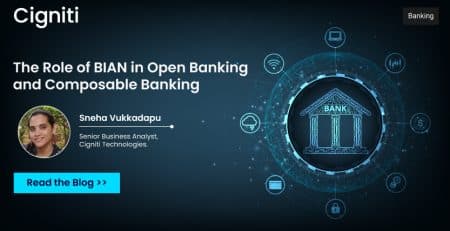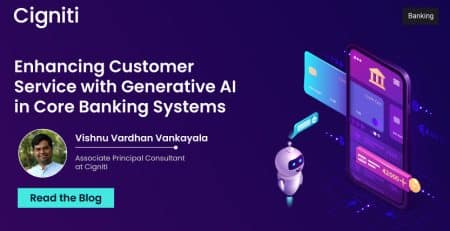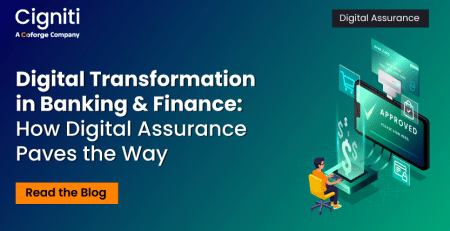From Core to Coreless: A Paradigm Shift in Banking
|
Listen on the go!
|
In the ever-evolving world of banking technology, the traditional core banking systems have long been the backbone of financial institutions. However, the limitations and challenges associated with these systems have paved the way for a paradigm shift towards coreless banking. Let us delve into the concept of coreless banking and explore how it is reshaping the banking industry.
Traditional core banking systems have been the industry standard for decades, acting as the central hub for financial transactions, customer data management, and other core banking functionalities. While these systems have served their purpose well, they have inherent limitations. Their monolithic nature often hinders scalability, flexibility, and real-time transaction processing. Additionally, they require extensive maintenance and are prone to security vulnerabilities.
Key Features of Coreless Banking
While coreless banking does not mean a ‘Banking system without core,’ it emphasizes the digital transformation from monolithic systems to architectures based on microservices and APIs. As banks transitioned towards coreless banking, APIs became the driving force behind connectivity and interoperability. APIs functioned as the digital bridges facilitating communication and data exchange between systems, applications, and external parties. They provided standardized interfaces and protocols, enabling seamless integration and interaction.
The rise of open banking further accelerated the evolution of coreless banking and APIs. Open banking initiatives encouraged banks to expose their APIs to trusted third-party providers, allowing them to securely access specific banking functionalities and customer data.
The emergence of distributed ledger technology, such as blockchain, laid the foundation for the coreless banking revolution. Banks started exploring the benefits of decentralized architectures, leveraging the principles of distributed ledgers to distribute banking functionalities across a network of nodes. This offered increased scalability, resiliency, and transparency. It eliminates the need for a central core banking system and distributes banking functionalities across a network of nodes.
Banking Industry Architecture Network (BIAN) demonstrated this approach using DXC’s customer information system, Zafin’s product & pricing platform, and the core banking systems of Thought Machine’s Vault and TCS Bancs. In this approach, banks need not be specific to one core banking system vendor but can compose their systems more vendor-neutrally. To enable this, BIAN has developed a ‘message modeler,’ a tool that BIAN community member banks can review, compare, and align their APIs to the BIAN Semantic standards to increase the interoperability between banks and technology providers.
This flexibility allows banks to eliminate vendor lock-in and easily swap in and swap out their services. Further, banks are not compelled to avail all banking software modules from a single vendor and can leverage best-of-breed software modules from various vendors.
Integration with emerging technologies is a hallmark of coreless banking. Artificial intelligence (AI) and machine learning algorithms can analyze large volumes of transaction data, detecting anomalies and fraud in real-time. Coreless banking can seamlessly integrate with decentralized finance (DeFi) platforms, enabling innovative financial products and services.
Use Cases of Coreless Banking
Coreless banking presents a multitude of use cases that demonstrate its transformative potential. Peer-to-peer transactions and payments are streamlined, allowing individuals to transact directly without intermediaries. Cross-border remittances become more efficient and cost-effective by eliminating the complex network of correspondent banks.
Microfinance and financial inclusion are enhanced through coreless banking, allowing easier access to financial services in underserved areas. Smart contracts built on coreless banking platforms enable automated and trustless agreements, ranging from loan disbursements to insurance claim settlements. Additionally, coreless banking offers opportunities for financial institutions to streamline their operations, reduce costs, and enhance customer experiences.
While coreless banking offers tremendous benefits, it comes with challenges and considerations. Regulatory and compliance issues must be addressed as authorities adapt to the decentralized nature of these systems. Collaboration between traditional financial institutions and coreless banking solutions ensures a smooth transition and avoids disrupting the existing financial ecosystem.
Outlook and Trends
Financial institutions increasingly recognize the potential of coreless banking and invest in research and development to adopt these solutions. Collaboration between traditional banks and coreless banking platforms will drive innovation and accelerate adoption. Emerging markets stand to benefit from coreless banking, as it enables financial inclusion and access to modern banking services.
Technological advancements will continue to shape the future of coreless banking. Integrating emerging technologies like the Internet of Things (IoT), big data analytics, and quantum computing holds immense potential for further innovation and disruption in the banking sector.
As per the Executive Director of BIAN, “In 2023, banks must focus on adopting a coreless banking model, which enables the delivery of banking services that are no longer dependent on legacy systems. This approach will empower banks to select the software vendors required to obtain the best-of-breed for each application area without worrying about interoperability.”
Conclusion
Coreless banking represents a paradigm shift in banking technology, offering advantages over traditional core banking systems. The future of coreless banking looks promising, offering enhanced security, efficiency, and financial inclusion for individuals and institutions alike. Financial institutions must embrace this transformation and seize the opportunities it presents to remain competitive in the evolving banking landscape.
Cigniti specializes in delivering exceptional quality assurance services for banking applications, encompassing a comprehensive range of testing processes such as functional manual testing, functional automation testing, performance testing, security testing, API testing, and more. We are dedicated to supporting global banks in their digital transformation journeys, enabling them to enhance the customer experience and gain a competitive advantage. Our expertise ensures that our client’s applications and systems run seamlessly, facilitated by efficient back-office operations. Our track record is a testament to our position as a trusted advisor and preferred technology partner in the banking industry.
With our profound domain knowledge and extensive understanding of industry regulations, Cigniti offers diverse solutions tailored to the specific needs of banks and financial institutions. These solutions encompass ISO20022 Migration, analytics-based digital lending, open banking assurance adhering to BIAN standards, and even Composable Banking platforms. Banks can deliver reliable and innovative financial services to their customers by leveraging our banking assurance services.
Need help? Contact our Digital Banking Assurance experts to learn more about coreless banking.





Leave a Reply